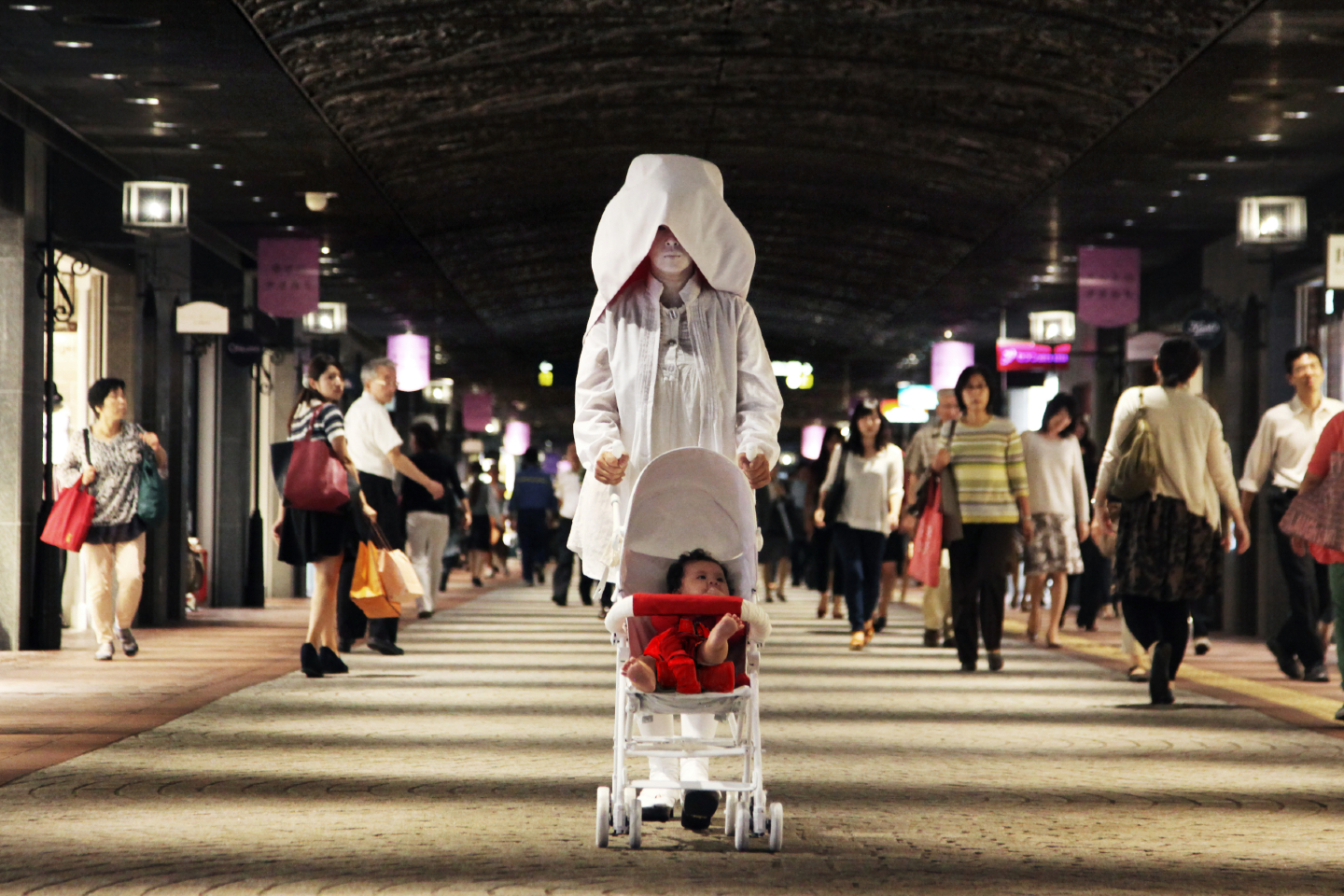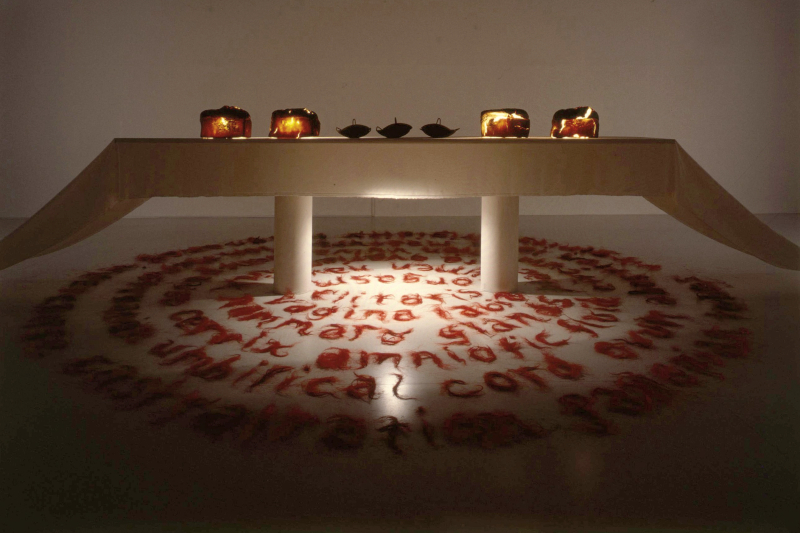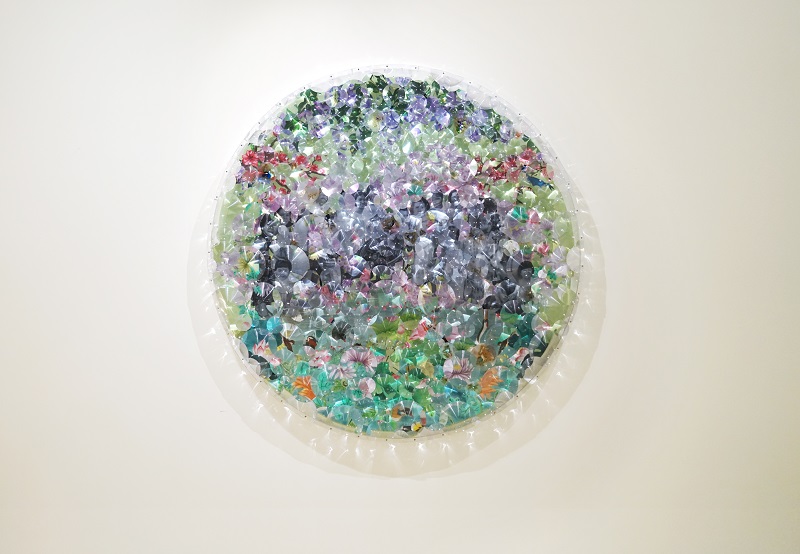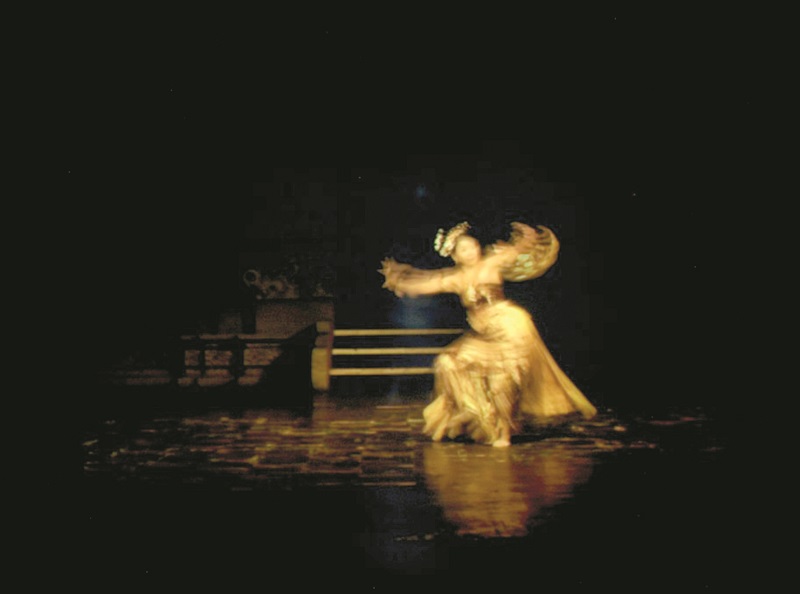
White Mother #1 (2014) by Anida Yoeu Ali (All photos: Gajah Gallery)
Gajah Gallery, one of Southeast Asia’s leading galleries, is hosting in its Singapore space an exhibition that features the works of 11 contemporary female artists from the region, which intersect culturally, geographically and ethnically.
During a recent visit to the Lion City, Options had the pleasure of walking through the exhibition, entitled Shaping Geographies, with co-curators Michelle Antoinette and Wulan Dirgantoro, who are well-known art historians with specific emphasis on contemporary Asian art.
Antoinette, a researcher and lecturer at Monash University, explains how they arrived at the exhibition’s theme. “We had a dialogue as co-curators and with the gallery, and I suppose we settled on looking at a group of women artists across generations, a cross section that covers different generations.”
Their backgrounds as art historians shine through in the curation, offering a contextually well-rounded and universal narrative through a mix of pre-existing works and newly commissioned ones. Collectively, they cut across several broad themes yet do not remove from the individual experience of each artist’s works and their unique contributions to the ever-evolving realms of Southeast Asian culture, politics and society.
suzann_victor_promise_2019_human_hair_velvet_bread_woks_baby_rocker_installation_work.jpg

It is perhaps apt to start with the first work one is likely to see upon entering the gallery — Promise (2019) — by Singaporean artist Suzann Victor. Like an altar in the centre of the room, a long table features four loaves of bread that have been hollowed out and are lit from within. Also on the table is a row of small woks, the lids of which are mechanically lifted up and down repeatedly, creating soft but constant clanging sounds.
Running like a table cloth across, a pair of seamless white garments are dramatically suspended on two sides. But what stand out are words created in concentric circles on the floor using human hair that has been dyed red.
Devoid of human presence, the piece — first presented in Tokyo in 1995 and now recreated for the show — nevertheless alludes to the idea of the body, particularly that of the female, with sensory cues. There is also an element of the forbidden, the unspoken. “For women reading the texts, it immediately resonates of the things we often can’t talk about as women. Like ‘menstruation’, ‘ovaries’ or even ‘vagina’,” says Wulan.
It is known that the hair script references the bodies of “comfort women” and how they were enlisted as part of an arsenal of war. It is a historical episode that Suzann once again addresses in her newly created work — She Is Closer Than You Think — which hangs on a wall nearby.
A circular acrylic painting covered by fragmented lenses, the canvas sees meticulously painted images of a woman through different years, almost photographic in their detail. “They are based on photos of a friend’s grandmother, who was a comfort woman in Malaysia,” says Antoinette. Suzann also paints motifs of flowers, birds and insects derived from Chinese and Peranakan culture.
suzann_victor_2019_she_is_closer_than_you_think_acrylic_on_canvas_acrylic_strip_and_lenses_202x15x202cm.jpg

The full image of the canvas is never seen clearly with the lenses offering glimpses of different parts at different angles. Antoinette points out that the sense of invisibility reflected in the work is also very much part of these women’s lives, stories that are deeply buried or ignored in our history. “It also comes back to the generational theme, in this case of trauma passed down as the current generation try to grasp what had happened but are not quite able to.”
Wulan adds, “We have to piece this story together from other sources because it is difficult perhaps for the daughter to hear it from her own mother.”
The exploration of the mother figure brings us to Cambodian-American performance artist Anida Yoeu Ali’s White Mother series inspired by her residency in Fukuoka, Japan, in 2014. A set of photographs show Anida with her face painted white, pushing her daughter in a pram in Fukuoka’s public areas.
Interestingly, her inspiration for the project came from a similar sense of invisibility and loneliness as a mother, especially in the public eye. “Again, this is the first time the White Mother series has been shown since her residency. During her residency, she invited Japanese mothers to be her collaborators. And through their stories of feeling uncomfortable or unseen in public spaces when they bring their young children out, Anida created this performance — by giving it a hyper-visibility, she uses performance to make the invisible more present,” explains Wulan.
The painting of Anida’s face, which is part of her interest and training in the Japanese dance theatre form Butoh, highlights the sense of alienation and displacement that mothers often feel in society, along with what one would imagine is the scrutiny that comes with caring for their children in public.
In her video work, the Sweden-based Balinese artist Tintin Wulia explores the questions of identity, belonging and fitting the mould through dance. On parallel cloth screens facing each other are two dancers performing a routine. One is Tintin herself, doing what is actually Balinese traditional dance, but with the moves somewhat mimicking the other dancer — the 19th century Austrian ballerina Fanny Elssler who became famous for introducing the Spanish dance, cachucha, into her performances.
“In translating the dance, Tintin shows not only the similarities but also the imperfections of the exercise. It is her questioning the fixed identity of a person,” says Wulan. Being Chinese Indonesian, the artist has had to grapple with questions of her legitimacy as a Balinese, her ability to speak the language or even to perform the traditional dance. She finds resonance in the story of Elssler, who boldly introduced a Spanish folk dance into French ballet, although she was of neither nationality.
It would seem that the tensions of personal, cultural, ethnic and religious identity are still at the forefront for Southeast Asian women. Underlining all of this is perhaps a sense of place, of geography, as a metaphorical symbol as much as a physical presence. The works of the Muslimah Collective of Pattani, Southern Thailand, show a determination to carve out their tangible presence within what many only see as a conflict zone, finding that licence in their everyday routines and objects related to their day-to-day lives.
As for young Johor and Singapore-based artist Kayleigh Goh, she literally paints spaces, conveying a sense of rawness and even coldness in her architectural works that depict exteriors and interiors on wood and cement. Deeply personal, the spaces she creates show structure and a sense of quiet, as if they are an ideal place in her mind.
Malaysian artist Yee I-Lann showcases a rather different work in the form of a traditionally woven canvas done in collaboration with Sabah women. In the left corner, she depicts the humble louvre windows that are a ubiquitous part of Southeast Asian architecture, the curators say, in a poetic reflection of air and life.
It also heralds Yee’s move to Sabah, where craft work such as weaving is culturally significant and passed down from generation to generation.
Other artists showing their works in the exhibition are Fika Ria Santika, Geraldine Javier, I Gak Murniasih, Nguyen Trinh Thi and Savanhdary Vongpoothorn.
'Shaping Geographies', Gajah Gallery, 39 Keppel Road, #03-04, Singapore. Until Dec 31. For more information, see here.
This article first appeared on Dec 16, 2019 in The Edge Malaysia.



